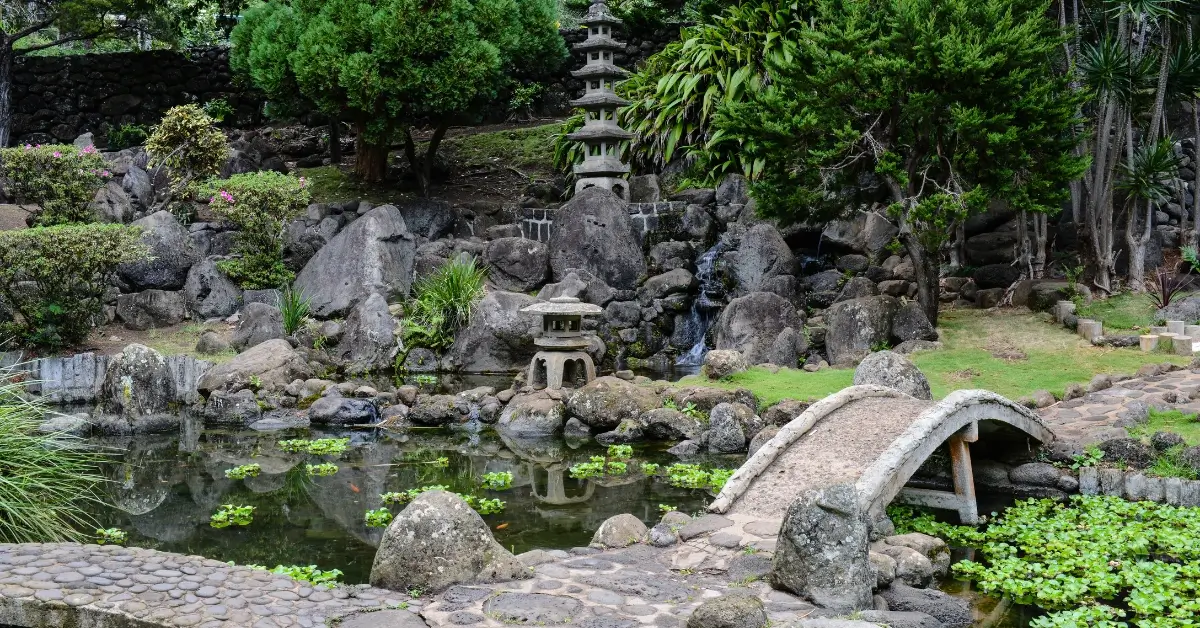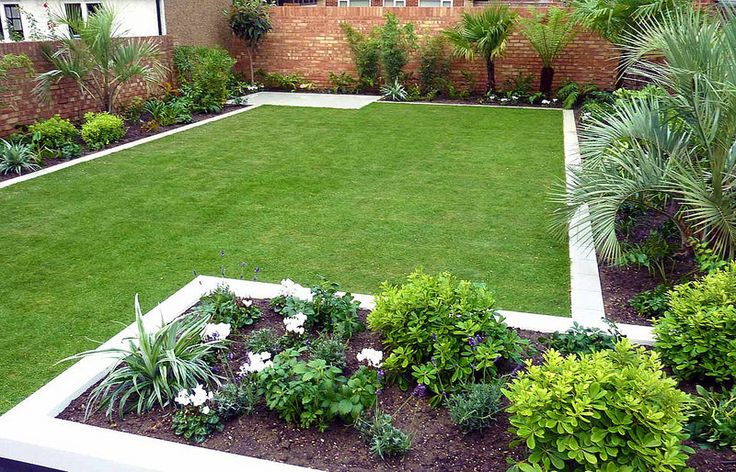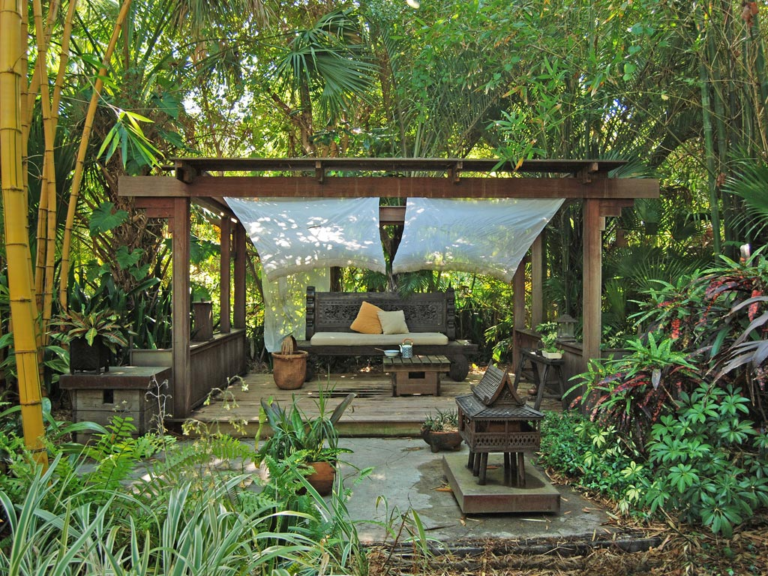When it comes to creating a peaceful, calming outdoor space, zen garden design truly stands out. These minimalist landscapes, inspired by Japanese philosophies, focus on simplicity and the beauty of natural elements to provide a tranquil oasis for meditation and reflection.
In a zen garden, you’ll find a careful balance of rocks, gravel, sand, and wood, often with only a few plants and no water features. This design style encourages moments of quiet contemplation, allowing us to reconnect with nature and find some peace amidst the chaos of our daily lives.
As we explore the world of zen garden design, we’ll discover various ideas and tips to help you bring the serenity of a Japanese-inspired garden into your own backyard. Each design element carries its own symbolism, fostering a deeper appreciation for the beauty of nature and the art of mindful living.
History of Zen Gardens
When it comes to zen garden design, it’s essential to understand the history behind these tranquil landscapes. In this section, we’ll explore the origins of Zen gardens in Japan and their global influence over time.
Origin in Japan
Zen gardens, also known as Japanese dry gardens, first appeared in Japan during the Heian period (794-1185) and became popular in the Kamakura Era (1185-1333) following the arrival of Zen Buddhism from China. These gardens were initially created at Zen Buddhist temples in Kyoto as a means to imitate the essence of nature and serve as an aid for meditation.
One of the world’s oldest garden planning manuals, the Sakuteiki, was published in the 11th century. It guided practitioners in the selection of rocks, placement of stones, and how to perfect raked patterns in Japanese Rock Gardens.
Global Influence
Over time, the influence of Zen gardens spread beyond Japan, and they began to be incorporated into various types of landscapes worldwide. With their minimalist designs and emphasis on the use of rocks and sand, these contemplative spaces promote a sense of tranquility and connection to nature. As a result, Zen garden principles have been applied to modern landscape design, providing peaceful and calming atmospheres in both public and private spaces.
In summary, understanding the history of Zen gardens helps us appreciate their unique design elements and the impact they’ve had on landscapes around the world. By exploring their origins in Japan and global influence, we can better understand how these serene spaces continue to inspire and inform contemporary garden designs.
Fundamental Elements of a Zen Garden
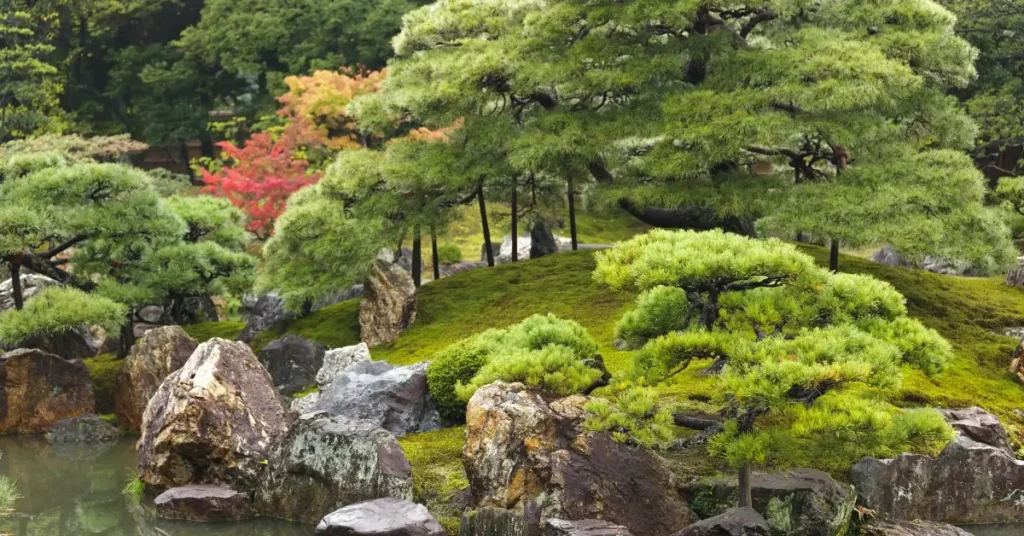
When it comes to zen garden design, there are some fundamental elements that infuse tranquility and serenity into the outdoor space. Let’s explore these essential components, which include rocks and gravel, water features, plants and trees, as well as bridges and paths.
Rocks and Gravel
In any zen garden, rocks hold special significance. They represent the core structure and serve as focal points. Carefully arranged stones and gravel symbolize different aspects of nature such as mountains, landscapes, and even water. The art of raking gravel into intricate patterns is also a pivotal aspect of any zen garden, showcasing a calming and serene ambiance.
Water Features
Water is another key element in zen garden design. It serves as a symbol of purity, and its gentle movement helps create a soothing atmosphere. Traditional Japanese water features, such as stone basins (tsukubai) and bamboo spouts (shishi odoshi), can be incorporated into your garden. Alternatively, you can opt for modern interpretations, like a waterfall or a small pond, to achieve a similar effect of calm and tranquility.
Plants and Trees
The choice of plants and trees in a zen garden is essential to achieving harmony and balance. Carefully selected species with distinct features, like the Japanese maple or the moss, contrast with rock formations, adding texture and color. Keep in mind that simplicity is the key, so avoid overcrowding the space with too many species. The careful pruning and shaping of these plants also contribute to the overall aesthetics, creating an atmosphere of peace and quietude.
Bridges and Paths
Incorporating bridges and paths into your zen garden design helps guide visitors on a mindful journey while connecting different areas of the garden. Depending on the size of the garden, bridges can be simple, such as a wooden plank crossing a stream, or more elaborate, like an arched bridge over a pond with koi fish. Meanwhile, paths made of stone or gravel provide a comfortable walkway, inviting visitors to explore, reflect, and experience the garden’s calming essence.
With these fundamental elements in mind, you can transform your outdoor space into a serene, inspiring, and harmonious zen retreat.
Creating Harmony in Zen Garden Design
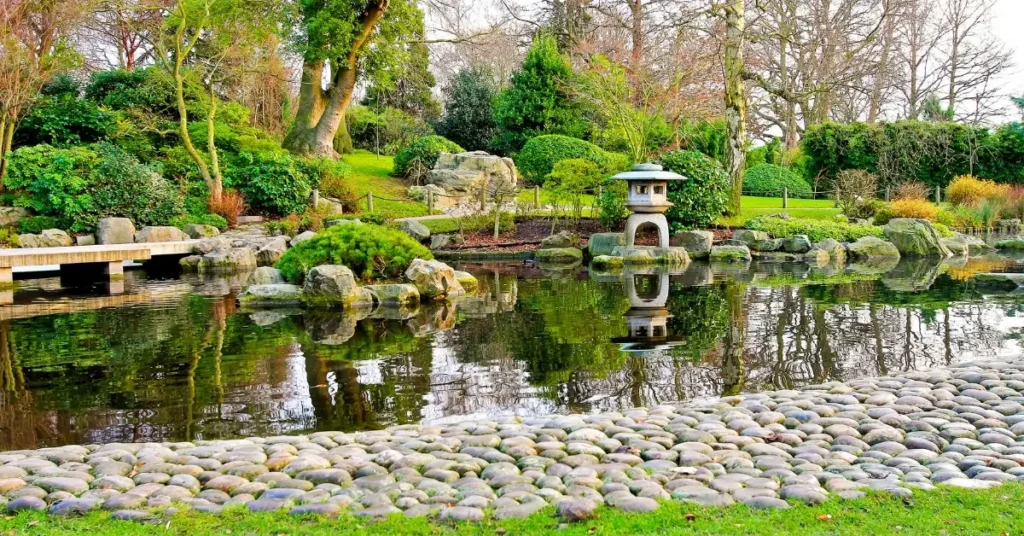
Creating harmony in our zen garden design can transport us into a space that promotes relaxation, reflection, and tranquility. To effectively achieve this, we will focus on three crucial aspects: balance, simplicity, and naturalness.
Balance
Central to zen garden design is the concept of balance. This balance is achieved through the harmonious placement of elements such as rocks, sand, and plants in our garden. It is essential to consider the size, color, and texture of these components, ensuring that none of them overpower the others. The aim is to create unity among all elements to evoke a sense of calm 15 and peacefulness.
A well-balanced garden can be achieved through various techniques like symmetry, asymmetry, or a combination of both. Symmetry can bring stability, while asymmetry adds interest and dynamic tension. The key is to establish a balance that feels right for our individual preferences and resonates with our personal sense of harmony.
Simplicity
Incorporating simplicity into our zen garden design is fundamental to creating a space conducive to contemplation and serenity. This can be achieved by applying the principle of Kanso, which advocates minimalism and restraint.
Simplicity can be expressed through:
- Limited color palette: Choosing a small number of harmonious colors to minimize visual distractions and promote a sense of unity.
- Sparse plantings: Selecting a few carefully chosen plant species that enhance the overall design without cluttering it.
- A focus on form: Emphasizing clean lines and geometric shapes to create a visually appealing and calming atmosphere.
Naturalness
A key aspect of zen garden design is the incorporation of naturalness or Shinzen. The idea is to celebrate the inherent beauty of the natural world without imposing rigid, human-made structures upon it.
To achieve this naturalness, consider the following:
- Incorporating natural materials: Selecting stones, wood, and plant materials that are indigenous to the area, in order to create a sense of place and authenticity.
- Creating a sense of movement: Incorporating elements such as flowing water or gently swaying plants to mimic the motion found in nature.
- Integrating organic shapes: Utilizing irregular, organic shapes to imitate the forms typically seen in the natural world and to counteract any stiffness imparted by the more formal aspects of the design.
By focusing on balance, simplicity, and naturalness, we can create a harmonious and tranquil space that embodies the essence of zen garden design and provides a welcome respite from the chaos of daily life.
Maintaining Your Zen Garden

When it comes to zen garden design, maintaining its beauty and tranquility is essential. In this section, we’ll discuss the two key aspects of upkeep: routine care and seasonal maintenance.
Routine Care
Routine care for your zen garden involves tasks such as raking the sand or gravel to create patterns, keeping the garden clean, and pruning plants. Regular raking not only maintains the aesthetic appeal but also promotes a sense of calm and focus. In addition, ensure that fallen leaves and debris are promptly removed to preserve the garden’s serene atmosphere. Lastly, pay attention to the surrounding plants and prune them regularly to maintain a balanced and harmonious look.
Seasonal Upkeep
Just like any other garden, a zen garden requires proper attention based on the changing seasons. For example, during spring, you might need to trim overgrown vegetation, keeping in mind the minimalistic design of a zen garden.
In summer, make sure your sand or gravel remains clean and properly raked. Also, keep an eye on your garden’s water features, such as ponds or fountains, and remove any algae or accumulated dirt.
As autumn arrives, make sure to clear fallen leaves and prepare the garden for winter. It might be necessary to protect delicate plants from freezing temperatures.
Finally, during winter, enjoy the unique snow patterns that form on your garden’s rocks and plants. To maintain your garden’s appearance, remove excess snow from pathways and sand areas without disturbing the natural beauty of the snow on rocks and plants.
Through regular care and seasonal upkeep, we can ensure our zen garden design remains a place of peace and harmony all year round.
Our Tips on Zen Garden Design

Creating a beautiful and serene space in your backyard can be achieved through careful zen garden design. We want to share our recommendations for incorporating the essential elements of a zen garden to help you create a calming, Japanese-inspired oasis.
First, consider the primary feature of a zen garden: the sand or gravel. The use of sand or gravel symbolizes water, and they should be thoughtfully arranged to evoke a sense of flow and tranquility. Make sure to rake the sand in wavelike patterns or create geometric shapes for a clean, minimalist look. Try to keep the patterns simple, as the purpose is to encourage reflection and relaxation.
Next, consider incorporating natural elements such as plants, rocks, and water features. When selecting plants for your zen garden, opt for low-maintenance varieties like succulents or lavender, which provide both beauty and function. Rocks, especially large ones, are often used as focal points in zen gardens and can be arranged to create balance and harmony. Adding a water feature, such as a small pond or fountain, can enhance the soothing atmosphere of your garden.
It’s also important to create designated spaces for meditation and relaxation within your zen garden design. Consider incorporating comfortable seating or a meditation nook for contemplation and mindfulness practice. Ensuring that your garden has areas for both movement and stillness is key to creating a well-balanced space.
Lastly, remember that simplicity is the essence of a zen garden. Avoid clutter and excessive decoration in your design. Instead, focus on a few key elements that evoke the spirit of zen and allow the natural landscape to be the focus.
FAQ – Zen Garden Design
What is a Zen garden design?
A Zen garden design is a minimalist landscape that embodies tranquility and simplicity, often using elements like rocks, gravel, and sparse vegetation to represent natural scenes and foster meditation.
How do I start creating my own Zen garden?
Begin by choosing a quiet space, deciding on its size, and selecting essential elements like stones, sand, or gravel. Arrange these elements thoughtfully, keeping in mind the principles of balance and simplicity.
What is the significance of the rocks and sand in a Zen garden?
Rocks often symbolize islands or mountains in Zen gardens, while the raked sand or gravel can represent water or waves. Their arrangement is meant to stimulate contemplation and reflection.
What is your experience in Zen Garden Design? Let us know in the comments!
If you’re looking for more design ideas, perhaps our latest article on rustic Italian garden design will resonate with you.

